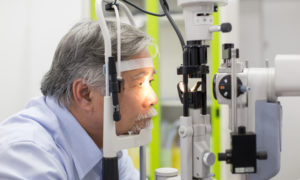By Suzanne LaKamp, OD, FAAO
Oct. 14, 2015

SYNOPSIS
Common errors in billing and coding can quickly erode practice profitability. Correcting five key mistakes can turn that around.
ACTION POINTS
TRACK COMMON MISTAKES. Track your most common coding mistakes and discuss correcting them at staff meetings.
TRAIN STAFF IN PATIENT INTAKE. Take detailed patient histories so the doctor can code correctly.
USE GUIDANCE TOOLS. Utilize guidance apps for smartphones, and online pages.
Billing and coding errors can add up to major losses in revenue. At smaller practices those losses can total tens of thousands of dollars annually, while larger practices can lose upwards of $100,000 annually. Claims rejections are commonplace, and denials can occur daily. Claim denials or rejections are essential to fix, and as timely as possible, to ensure payment. You are striving for 100 percent accuracy, however, mistakes can occur on both sides of the table. When they do occur, they cost both time and money. ICD-10, with its additional need for specificity, poses even greater challenges, as practices adapt. Fortunately, there are some key ways to avert errors.
Recognize Most Common Errors–and Fix Them
Incorrect demographics or incorrect insurance information
Fix: Continually update patient demographic information for incorrect information or any address changes. Confirm that current insurance information is correct. Typically, the front desk staff should handle these concerns. Copy or scan the patient’s insurance card, and then update that information in your records to exactly match the third-party information.
No-charge visits
I have worked in various clinic settings over the years where the clinics failed to charge a patient for a visit. Forgetting to charge the patient, or giving away eyecare, results in lost revenue very quickly. For example, the doctor may feel the patient cannot afford the visit, staff forgot to bill, staff waited too long to bill, or reimbursement was the wrong amount, just to name a few common circumstances when doctors may forego asking for payment.
Fix: Eyecare professionals should not discount exams or give exams free of charge. This is also of legal concern. There are certain circumstances, however, where a follow-up visit might be indicated such as when the patient is within a global period for a procedure.
Using only E&M codes, or only eye codes exclusively. Incorrectly using these codes reduces revenue.
Fix: The most common culprit of coding errors is not fully understanding the criteria for E&M codes and eye codes, as well as not knowing reimbursement differences, which leads to bad habits. As a resident, using ICD-9, 99213 was my most commonly used code, but not always the best choice in terms of reimbursement.
Failing to add interpretation and report to procedure codes can result in denied claims, such as with visual fields or other forms of testing.
Fix: Busy ECPs can easily forget to document testing interpretation. Scribes and technicians can remedy this error by screening the charts the same day, and flagging incomplete parts for the doctor to finish in between patients, or at the end of that day.
Editor’s note: Interpretation and report must be documented in your EHR. If you are audited and did not document, then you get a denied code. Report documentation is not required on every code (99213 does not require a report), however, retinal photography does.
Failing to add modifier or using modifiers incorrectly to procedure codes such as with punctal plugs.
Fix: Procedural codes for punctal plugs are unilateral and have specific modifiers. ECPs need to be aware of which procedures are unilateral by definition, and which are bilateral.
Editor’s Note: Punctal plugs are more specific than unilateral, there are modifiers for that code that are puncta specific – e.g.: right upper puncta vs left lower puncta.
Implement an Office Visit Matrix
An excellent resource I have used that is available through Corcoran Consulting Group is the office visit matrix. It lists E&M, as well as eye codes, in order of highest to lowest reimbursement and includes a grid of exam elements that support each code. It is worth attending a Corcoran presentation to understand its use. For the use of ICD-10, the American Optometric Association has eyecare-specific ICD-10 coding resources that may be of great benefit.
Train Staff to Code Properly
Support staff cannot predict your examination findings or treatment plan. They can, however, be trained to obtain the appropriate history to support every examination as an E&M code (as the respective eye code should easily be supported by this documentation).
Patients sometimes expect these re-checks and follow-ups to be at no charge, and this misconception can be reinforced by how receptionists, opticians and technicians respond in their interaction with these patients. The doctor should evaluate the patient prior to determining whether it is truly a courtesy visit. Support staff should advise the patient that they will be scheduled to determine what the problem is rather than stating that they will be scheduled to “re-check the prescription.” Technicians should obtain appropriate history and entrance testing when these patients return.
A chief complaint of “re-check glasses” will not support a medical exam. Frequently, glasses prescriptions change due to cataract progression, or contact lenses become uncomfortable due to dryness or seasonal allergies. It is not any more the responsibility of the optometrist to continually see these patients at no charge than it is the responsibility of a primary care doctor to see a patient for free because a patient’s medications are no longer working.
Editor’s note: The major point is for the history taken by staff and the reason for the exam written in the schedule to be accurate and never say “re-check the prescription.” Instead it should say “loss of vision, headaches,” whatever the patient symptom is, and not the patient/staff interpretation that what is going on is an “Rx re-check.”
Avert ICD-10 Errors
ICD-10 will likely cause a surge in denied claims overall, despite the CMS announcement, for instance, that claims which are billed under the Part B physician fee schedule based on the specificity of the ICD-10 diagnosis code will not be denied for one year. There are numerous payers, in addition to Medicare, with various, changing guidelines for coding that are likely to lead to increased denials.
I have worked in clinics where major changes included the switch from paper to EHR, and then preparation for ICD-10. The best practice to avoid errors is preparation. After-hours training is good practice, but takes extra time and resources. Employees are never thrilled about training after a full clinic day. It diminishes morale. Clinics typically will also reduce workflow for a period of time, to ensure the staff has adequate time to practice new charting or work with a new coding system. The goal is to have experience and to regain normal clinic volume before the deadlines. Errors will arise, but a fully trained and prepared staff can better handle challenges as they come.
Spot Potential Problem Areas
Workers comp is not mandated to convert to ICD10. Your practice needs to be able to switch between ICD-10 and ICD-9 for this area of coding.
Use ICD-10 Apps & Online Cheat Sheets
When I used ICD-9, I often used apps and internet searches on my smartphone dedicated to coding when I had to quickly locate a code. This was the fastest solution, as I keep my phone on me at all times in clinic. Not every room has a computer or coding manual, and phones are easily accessible. This is not the most precise method of coding, but for the common diagnoses, worked quite well.
For codes I was less familiar with, I could cross-reference to one of the manuals. ICD-10 introduces more challenges to these former hacks. While some EHR has software capabilities of ICD-9 code translation to ICD-10, there are numerous online sites that do this as well. Code mapping is quite complex, however, and may introduce more errors as evidenced by statistics published in the 2012 Harvard Health Policy Review. It remains to be seen how the eye codes will fare.
Double-Check Medical Diagnosis
Technology has a limited role in reducing errors. EHR may be capable of counting the number of HPI boxes or exam elements entered, but the more challenging part of coding is the medical decision making. The responsibility of correct coding will be even greater for the provider with ICD-10 than with ICD-9. Technology can help with both CPT coding and with ICD coding, but human eyes should always check the results to make sure they are accurate.
Consider Using Billing & Coding Clearing House
The responsibility of correct coding will be even greater for the provider with ICD-10 than with ICD-9.
Processing claim denials/rejections in-house can take up a large amount of time and resources, and require designated full-time staff for handling.
Outsourcing billing and coding is a great option for many practices. Third-party billing reduces errors, resulting in more successful claims. The faster the claim is accepted, the quicker the reimbursement. Third-party billing increases collections relative to in-house services. A clearing house offers great benefit to a larger, medically based practice, for instance, where claims may be more difficult to track. On the other hand, smaller offices geared toward wellness examinations may not have the volume or revenue necessary to justify the cost of third-party billing. Third-party billers may charge up to 8 percent of collections, which can significantly decrease revenue. For smaller practices with little-to-no turnover, and experienced billers, it may be beneficial to keep everything in-house.
Suzanne LaKamp, OD, FAAO, is an associate at Durrie Vision in Overland Park, Kan. To contact: dr.suzanne.lakamp@gmail.com



























